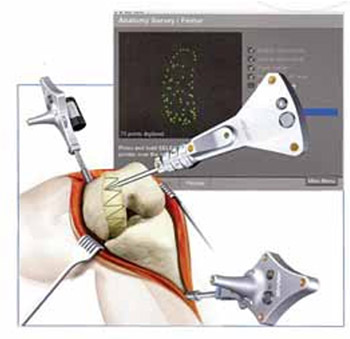Computer Assisted Orthopaedic Surgery – CAOS
DOI:
https://doi.org/10.17305/bjbms.2006.3202Keywords:
CAOS, Computer Assisted Orthopaedic Surgery, orthopedics, surgeryAbstract
The use of computer navigation in orthopedic surgery allows for real time intraoperative feedback resulting in higher precision of bone cuts, better alignment of implants and extremities, easier fracture reductions, less radiation and better documentation than what is possible in classical orthopaedic procedures. There is no need for direct and repeated visualization of many anatomical landmarks (classical method) in order to have good intraoperative orientation. Navigation technology depicts anatomy and position of "smart tools" on the screen allowing for high surgical precision (smaller number of outliers from desired goal) and with less soft tissue dissection (minimally invasive surgery - MIS). As a result, there are more happy patients with less pain, faster recovery, better functional outcome and well positioned, long lasting implants. In general, navigation cases are longer on the average 10 to 20 minutes, special training is required and equipment is relatively expensive. CAOS applications in knee and hip joint replacement are discussed.
Citations
Downloads

Downloads
Published
How to Cite
Accepted 2018-02-18
Published 2006-02-20









